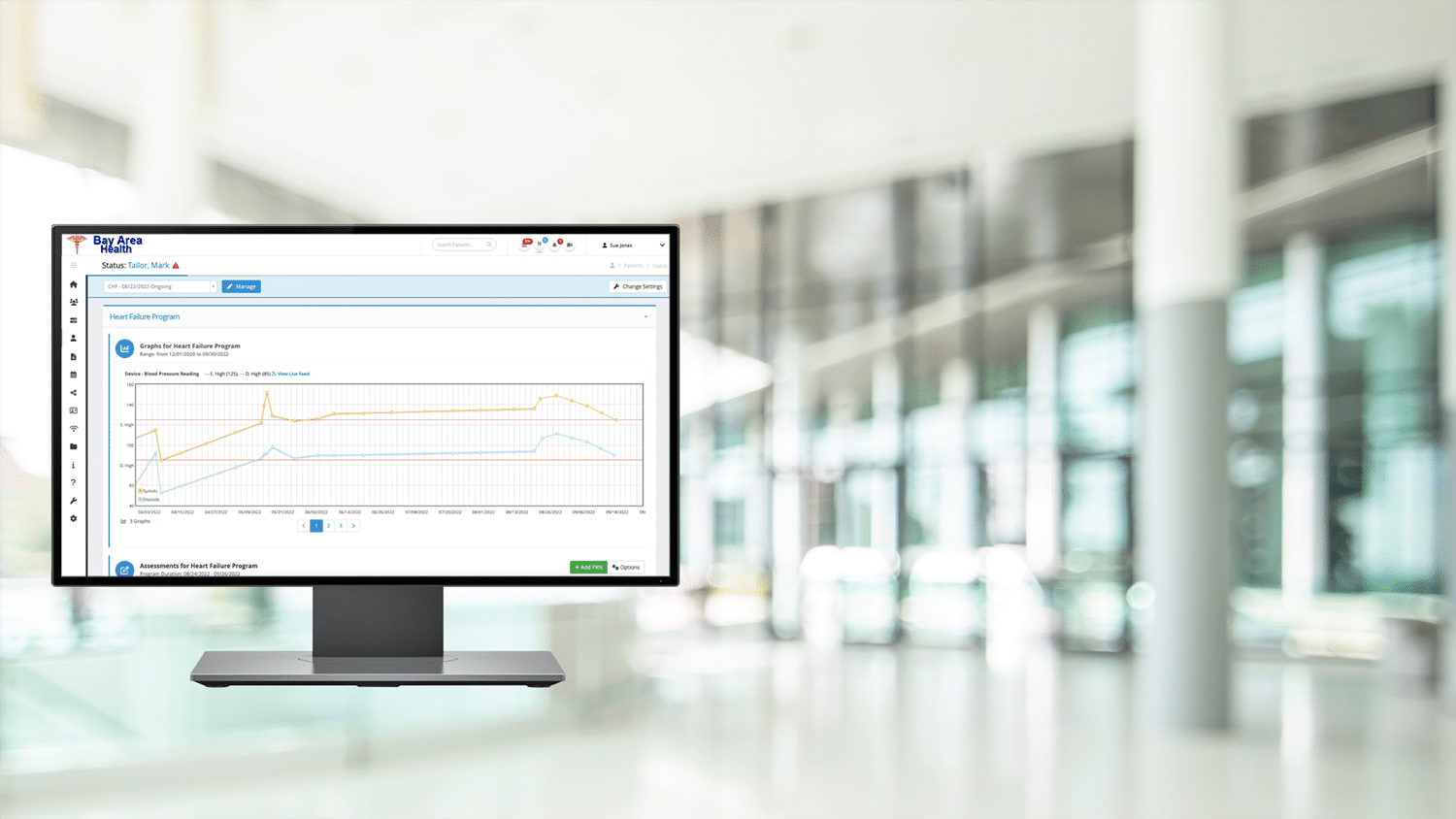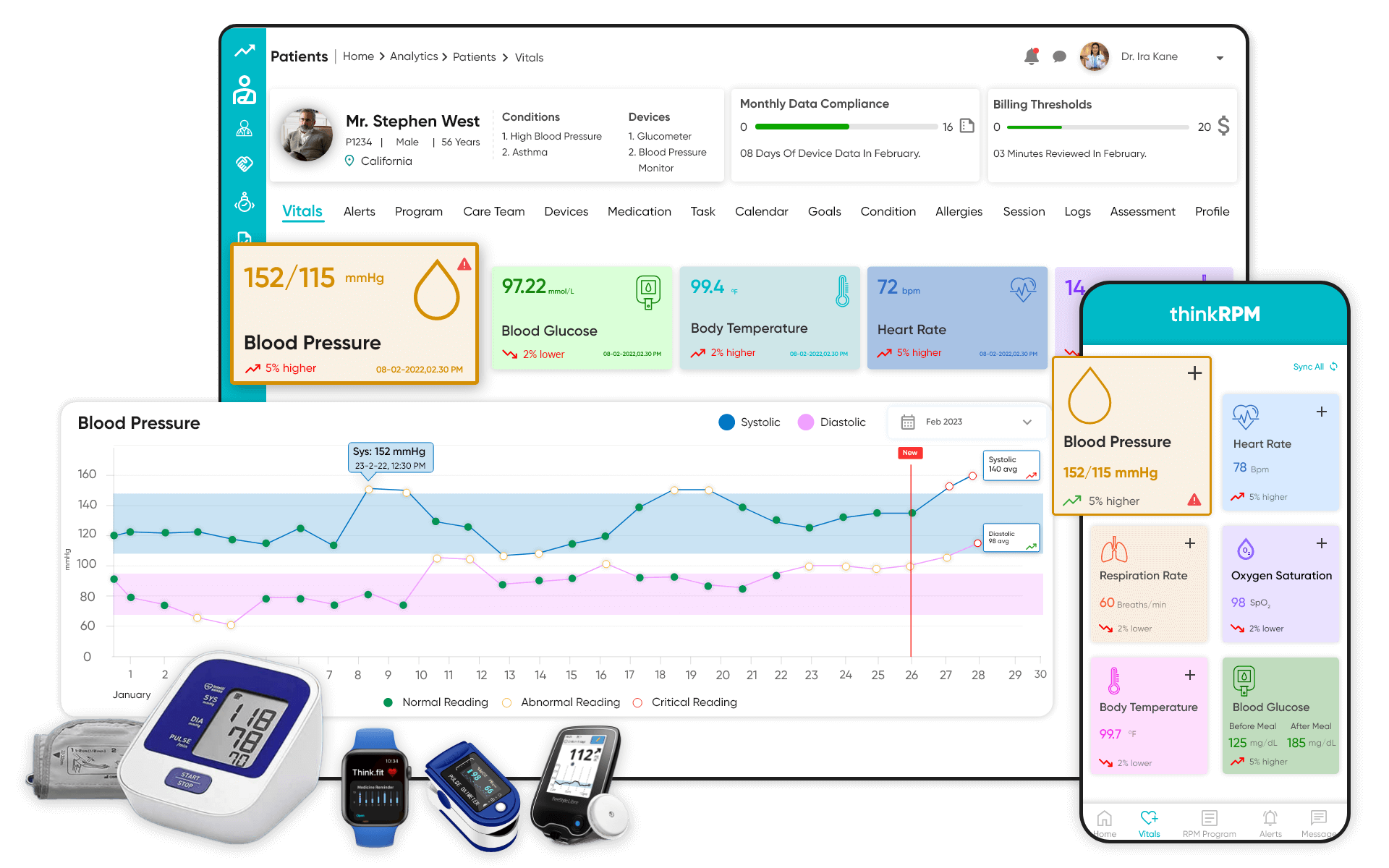Safeguard Remote Patient Monitoring Software: Protecting Patient Data
Safeguard Remote Patient Monitoring Software: Protecting Patient Data
Blog Article
The Future of Healthcare: Remote Patient Checking Simplified
As health care proceeds to evolve, one area that holds enormous assurance is remote client tracking. The idea of streamlining this process with technical advancements is reshaping the method treatment is delivered and received. With a focus on boosting patient outcomes and enhancing medical care distribution, remote surveillance is poised to transform the market. By checking out the benefits, technological advancements, and future fads in this area, we can obtain valuable insights into the transformative potential of remote patient monitoring.
Benefits of Remote Client Monitoring
Remote individual monitoring offers a wide variety of benefits for both medical care suppliers and patients alike. Furthermore, remote patient tracking boosts the overall high quality of treatment by providing a much more thorough and holistic view of clients' health and wellness standing beyond traditional in-person sees.
Moreover, remote client tracking can bring about better patient end results and complete satisfaction. Individuals can appreciate the convenience of getting treatment in the convenience of their very own homes while still recognizing that their health is being closely kept track of. This can lead to boosted individual involvement and adherence to therapy plans, inevitably bring about far better wellness end results. In addition, remote surveillance can lower the demand for frequent medical facility sees, reducing health care expenses for both carriers and individuals. On the whole, the benefits of remote client tracking are clear, making it an important tool in modern-day medical care shipment.
Technology Driving Remote Surveillance
In the realm of modern health care, technological innovations play an essential role in driving the advancement and effectiveness of remote person tracking. The assimilation of ingenious technologies such as wearable gadgets, mobile applications, and cloud-based platforms has revolutionized the method healthcare service providers remotely monitor and manage individual health and wellness - best remote patient monitoring software. These technologies allow continuous real-time monitoring of vital indicators, medication adherence, and other essential wellness data, enabling for prompt treatments and individualized treatment strategies
One trick modern technology driving remote tracking is the Net of Points (IoT), which enables seamless connectivity in between medical devices and health care systems. IoT tools such as smartwatches and cordless sensors collect and transfer person information to centralized platforms, promoting remote surveillance from anywhere in the world. Expert system (AI) and artificial intelligence algorithms even more enhance remote tracking by examining huge quantities of person information to detect patterns, predict health patterns, and alert doctor to possible concerns.
Effect On Medical Care Distribution
With the assimilation of innovative modern technologies driving remote person surveillance, the effect on health care shipment is ending up being progressively profound and transformative. Remote person surveillance enables doctor to provide more customized and proactive care to people, bring about enhanced health and wellness outcomes and lowered medical facility admissions. By remotely tracking essential indications, signs, and medicine adherence, health care professionals can interfere early, stopping problems and boosting the general quality of treatment.
Furthermore, remote surveillance improves accessibility to health care services, especially for individuals in country or underserved areas. People can get constant surveillance and support from their homes, removing the requirement for constant in-person sees. This not only conserves time and reduces expenses for both people and healthcare centers however additionally reduces the threat of exposure to contagious conditions, an important factor to consider in the current medical care landscape.
Furthermore, remote person tracking makes it possible for doctor to better prioritize and assign sources treatment based on real-time data. By determining risky patients and stepping in immediately, medical care delivery becomes a lot more reliable and reliable, ultimately leading to an extra lasting and patient-centered health care system.
Improving Patient Outcomes

In addition, RPM permits positive administration of persistent problems, reducing the chance of intense worsenings and hospital readmissions. People profit from boosted comfort and comfort, as they can receive treatment in their very own homes while remaining attached to their doctor. This constant monitoring not only boosts individual complete satisfaction but also promotes a sense of empowerment and engagement in their very own health and wellness management.
Future Trends in Remote Surveillance
Welcoming advanced technologies in remote person tracking is shaping the future landscape of health care delivery. The future fads in remote tracking are expected to change the method healthcare is supplied, making it much more patient-centric and effective. One significant pattern is the increased usage of wearable gadgets and sensors to collect real-time information, allowing doctor to keep an eye on patients constantly without the demand for regular in-person brows through. These gadgets can track essential signs, drug adherence, and activity degrees, providing a detailed sight of the client's wellness status.

Furthermore, telehealth platforms are ending up being extra sophisticated, enabling online appointments, remote diagnosis, and remote client keeping an eye on done in one integrated system (rpm software). This all natural strategy to remote monitoring is improving health care shipment, improving individual contentment, and ultimately, improving overall quality of treatment
Verdict
Finally, remote client tracking provides many advantages in health care shipment, driven by developments in innovation. It has the prospective to improve client outcomes and transform the means medical care is delivered. Future official site patterns in remote tracking will continue to form the landscape of health care, providing possibilities for even more effective and individualized client care.
Remote person surveillance provides more info here a wide range of benefits for both medical care carriers and individuals alike. Furthermore, remote patient surveillance improves the overall top quality of treatment by providing an extra detailed and alternative view of patients' wellness condition past standard in-person gos to.
In addition, remote individual monitoring can lead to enhanced patient end results and fulfillment. Remote patient tracking allows medical care companies to offer more aggressive and individualized treatment to clients, leading to boosted health results and lowered medical facility admissions. go Remote patient tracking (RPM) plays a substantial function in boosting client results by giving constant, real-time information that enables health care suppliers to intervene quickly and change therapy strategies as needed.
Report this page